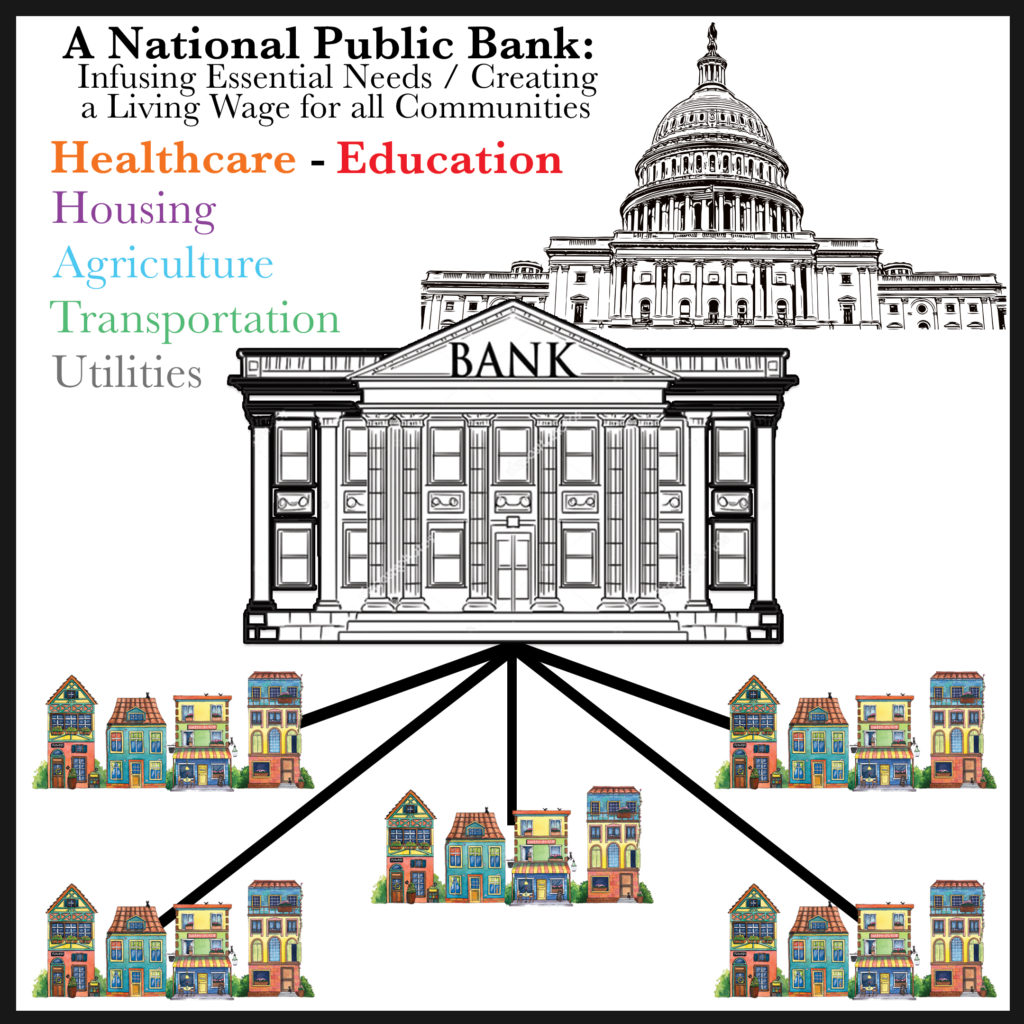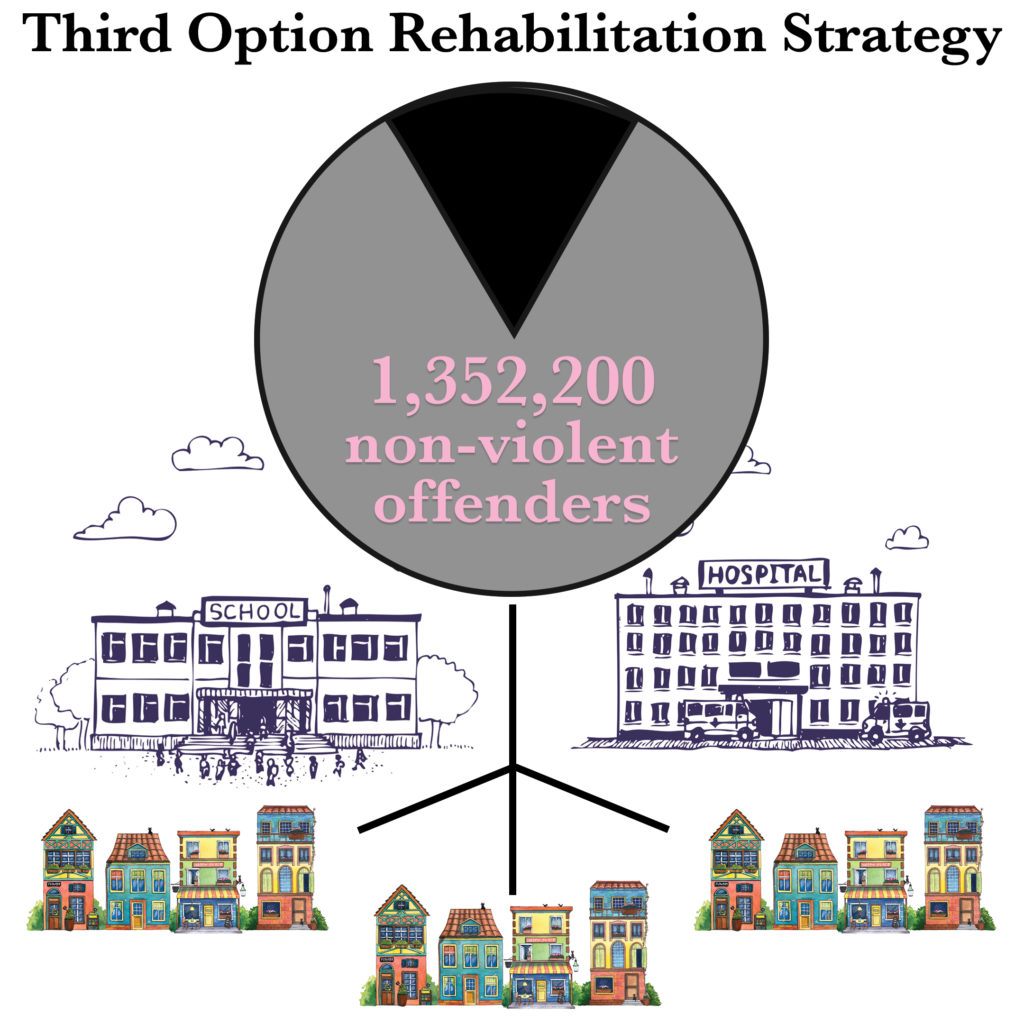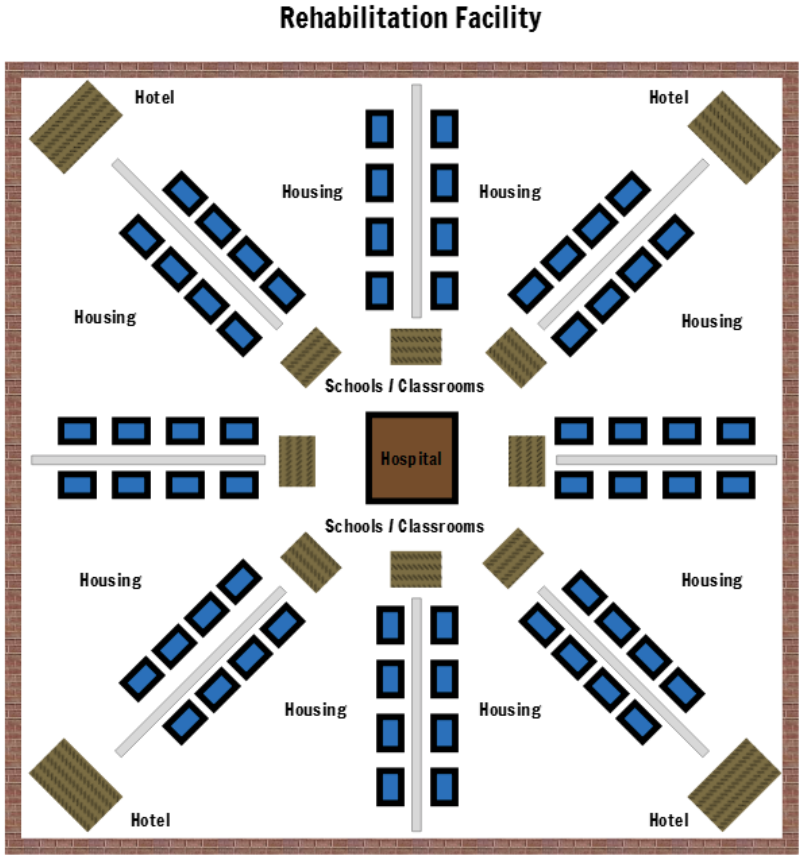For those not given any empowerment, constant recharging will be needed.
It is a slippery slope, attempting to climb up out of the hole wealth inequality has dug for many of our citizens. Those who internalize their suffering, as if they somehow deserve it, have the choice of either depression or addiction or poor health outcomes. If they ‘externalize’ this suffering, and physically act out, they invariably wind up in the prison system. Those who take the high road and peacefully protest the unfairness, are at best the object of patronizing ‘handouts’ from the top, that do nothing to solve this underlying unfairness; more often are ignored or even ridiculed by other groups at the bottom, who feel attention is being taken away from them, and their issues.
There are currently so many things wrong with society, we end up drowning each other out, trying to be heard on each important issue. Ironically, all issues emanate from the same source, and if we could frame the conversation in this way, we could all stand together, instead of separately, and become the change that all of us seek. Those at the top do not want consensus – unions, ‘class action’, coalitions – they want to maintain control, and divide in order to conquer any attempts to lost control. 2.3 million of us are currently locked in cages, divided and conquered. Instead, shouldn’t they be 2.3 million red flags that something is not right? Or 2.3 million reasons to try a different approach?

The Third Option chooses to use a holistic approach, because the pervasive nature of this problem demands it.
- Redefine rights as “reciprocal obligations”; they have never been natural, or naturally enforced. We must grant them to each other, in order to truly secure them.
- Make Healthcare a ‘right’, understanding that we must then take a more active role in securing our health, as part of this “reciprocal obligation”.
- Also make ‘rights’ out of each of our most essential needs, like housing, water/sewer, electricity, communication, agriculture, transportation, and education. Nothing would be given away for free, but per our ‘reciprocal obligations’, if we contribute to society, through employment, all these needs would be made easily ‘affordable.
- Expand Healthcare to include a large mental health component; expand this into education, with one ‘counselor’ working alongside each teacher in smaller-sized classrooms. Then expand education itself, from pre- and postnatal care, to childcare and two years of Pre-k. The last two years of high school would be for securing an Associate Degree that leads to employment in an essential needs category within the Community. Adults wishing to learn a new trade may also attend these classes.
- Redesign each Community (of 100,000 citizens) with Behavioral Care offices (meant for everyone), located next to temporary housing (for those between jobs). Affordable housing will also be built within every Community, available to those who are working (‘reciprocal obligations’).
- Outside the Communities, large ‘Global Schools’ would be built. They are a combination of school and healthcare facility, and would serve many purposes.
- Global Schools would house all non-violent offenders, who would be sentenced to two years of education (an associate degree in an essential needs field), meanwhile getting intensive mental health and addiction treatment, if necessary; next they would be offered a job in a Community, with temporary housing at first, transitioning into affordable housing, if everything goes as planned.
- Global Schools would be placed along the U.S. border, to serve as Immigration Facilities, so that immigrants could be educated (language, customs, associate degree) prior to entry as ‘naturalized’ citizens. Their path would lead from this two-year education to a mandatory one-year ‘internship’, where they would travel to another Global School, built in a ‘bottom billion’ country, and help educate and train others in these universal needs.
- Violent offenders would get this same chance, and hopefully would be able to make a successful transition. Here, their road may also be longer, depending on the political climate.
- To affect the health of every citizen in a positive way, we would lower the work week to 30 hours. With the advent of A.I. and robotics, etc., the work week could eventually be lowered to 20 hours. The minimum wage would be adjusted, first to $15 / hour, then to $22.50 (when the 20 hour work week gets introduced). This would create a ‘living wage’ for everyone, because the monthly cost of living would have been reduced significantly. (Of course, people could work as much as they wish; the goal is simply to make a $450 a week paycheck cover the cost of living, turning all jobs into ‘good jobs’).
The solution to all our suffering is not complicated. Holistic Healthcare, Education, a job with a Living Wage, Affordable Basic Needs, and Community that is connected to the idea that when each person succeeds, the entire Community succeeds.
Who’s Behind Bars: Incarceration by the Numbers
- Drug Offenders: 427,100 (20% of prison population)
- Inmates Suffering Mental Health Issues: 230,000 – 350,000 (10%)
- Two Million people suffering mental illness are booked into jails each year
- 22,000 are Involuntarily committed to State Psychiatric Hospitals / Civil Commitment Centers
- Total Non-Violent Offenders: 718,200
- 403,600 incarcerated for issues of ‘property’ (fraud, burglary, theft)
- 314,600 incarcerated for issues of ‘public order’ (drunk driving, prostitution, sexual ‘deviancy’)
- Total Violent Offenders: 909,000 (robbery, assault, rape, manslaughter, murder [183,000])
- Robbery: 169,000
- Manslaughter: 17,000
- Immigrants currently Detained: 53,000
- Total detained in ‘Pre-trial Detention’ (mostly in local jails, too poor to make bail): 555,000
- Of the 631,000 sitting in U.S. jails, 448,000 are non-violent offenders
- Those re-incarcerated for technical violations of their probation or parole: 168,583
- Youth in confinement: 67,300 (federal, children, pre-trial, ICE)
- U.S. Death Row Inmates: 2,553 (17 were executed in 2020)
- Total number of homeless in U.S. – 552,830

As part of The Third Option solution, all non-violent offenders will receive an automatic 2-year ‘time out’, to treat and educate them in an attempt to get them back and contributing to the whole. This 2-year commitment to Americans in trouble will be paid for by confiscating 2 years of their yearly Income Investment, which is a cost-effective strategy for turning a negative situation into a positive one.
Of the 2.3 million citizens currently incarcerated in prisons and jails, 1,352,200 of them have not physically harmed anyone. If we can treat their addictions and mental health issues, educate them in order to fill a societal role, supply them with all the continued healthcare and essential needs necessary to make it, the current Incarceration Bill would drop from $80 billion a year to around $25 billion.
The Third Option would locate Homeless ‘Villages’ adjacent to Rehabilitation Facilities, with the purpose to treat, house, educate, and care for those not able to remain within the Community, although transitioning back is always the goal*. Behavioral Care, located within the Community, will also have beds available for these citizens in transition. The homeless would similarly have their yearly Income Investment confiscated, so no government tax would be incurred in order to pay for this.
*Bringing homeless nearer the Rehabilitation Facilities is a cost-effective strategy, in order to utilize ‘economies of scale’, and ensure that the confiscated Income Investment money will cover the entire cost of providing this care.
Ideally, Rehabilitation (or Immigration) Facilities would need a 4 square mile perimeter around them, enough to potentially house 100,000 people within that boundary (plus the room to build surrounding Homeless or Off-Grid housing outside of this perimeter).

LOGISTICAL NOTES:
INFRASTRUCTURE:
- Health Care buildings will sit directly in the center of the complex.
- Around that We will build 8 Schools, providing Associate Degrees for all the jobs that need filling within our Federal businesses.
- Construction
- Agriculture
- Health Care / Human Services
- Solar / Wind / Hydro energy tech
- Education / Business
- Computer Science, etc.
- The housing will branch out with the addition of more “residents”, as they will be learning their craft by building housing for themselves, among other skills.
- Housing for teachers health care workers, and visitors to the Facility will be placed around the perimeter (Labeled “Hotels” in the diagram, because visitors will need to pay something in order to stay there.
Infrastructure Costs
1)Health Care for 100,000 was already figured into the Health Care Budget
2) 4,000 classrooms (6 million square feet) will cost at least $600 Million to build
3) 20,000 Zero Energy or Passive houses will eventually be needed
- $200,000 per house (for materials) X 20,000 houses + 100,000 beds = $4.1 Billion
4) Four “Hotels” with 2300 rooms total (750,000 sf) supposedly cost $400 Million
- (Our Construction Team may be able to do it for only $75 Million)
BOTTOM LINE:
- We are confiscating $6,000 per resident a year to pay for all of this. The Retirement Investment from 100,000 residents would pay for a $10 Billion Bank Loan. In reality, this Bank Loan will probably be broken into smaller amounts, as needed.
- Another $9.6 Billion Bank Loan has been set aside to build Infrastructure for the Homeless, that can also be paid off by the Retirement Investment from the Homeless living there.
As part of our Health and Education “residency” programs, workers will get free room and board and work for less pay (which may also coincide with paying off a student loan).

